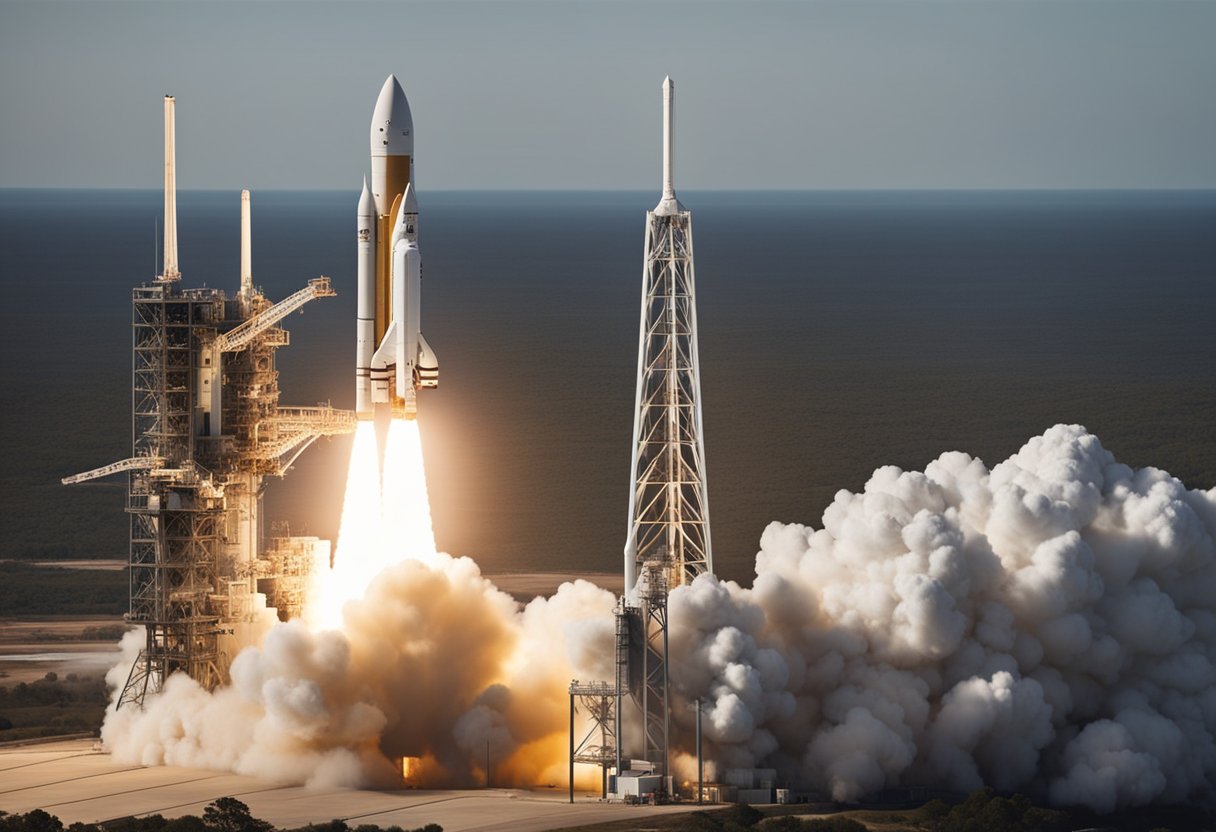
The trajectory of the space launch vehicle market is a subject of increasing interest as the industry encounters a period of transformative growth. With governments and private companies alike investing heavily in space exploration and satellite deployment, the market is projected to experience significant expansion. Enhanced government spending and private investment have facilitated the development of cutting-edge technologies in launch vehicles, leading to a surge in market opportunities.
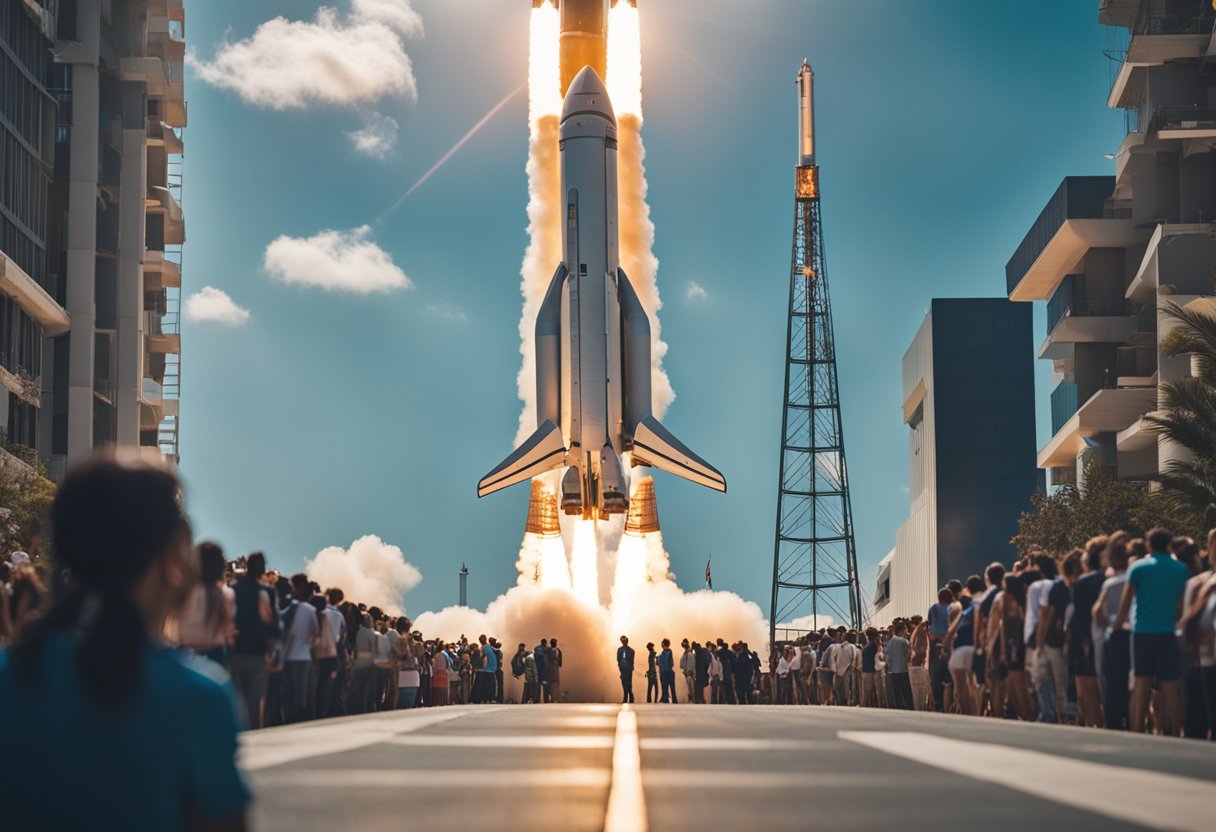
Concurrently, the regional dynamics of the space launch services add an interesting layer to the market landscape, with various countries and private entities establishing themselves as key players. The diversity in market segments—ranging from microsatellites to heavy payloads—reflects the meticulous stratification of the industry. Moreover, the application of spacecraft launches, spanning from communication to space tourism, portends the wide-ranging impact space technology will continue to have on our everyday lives.
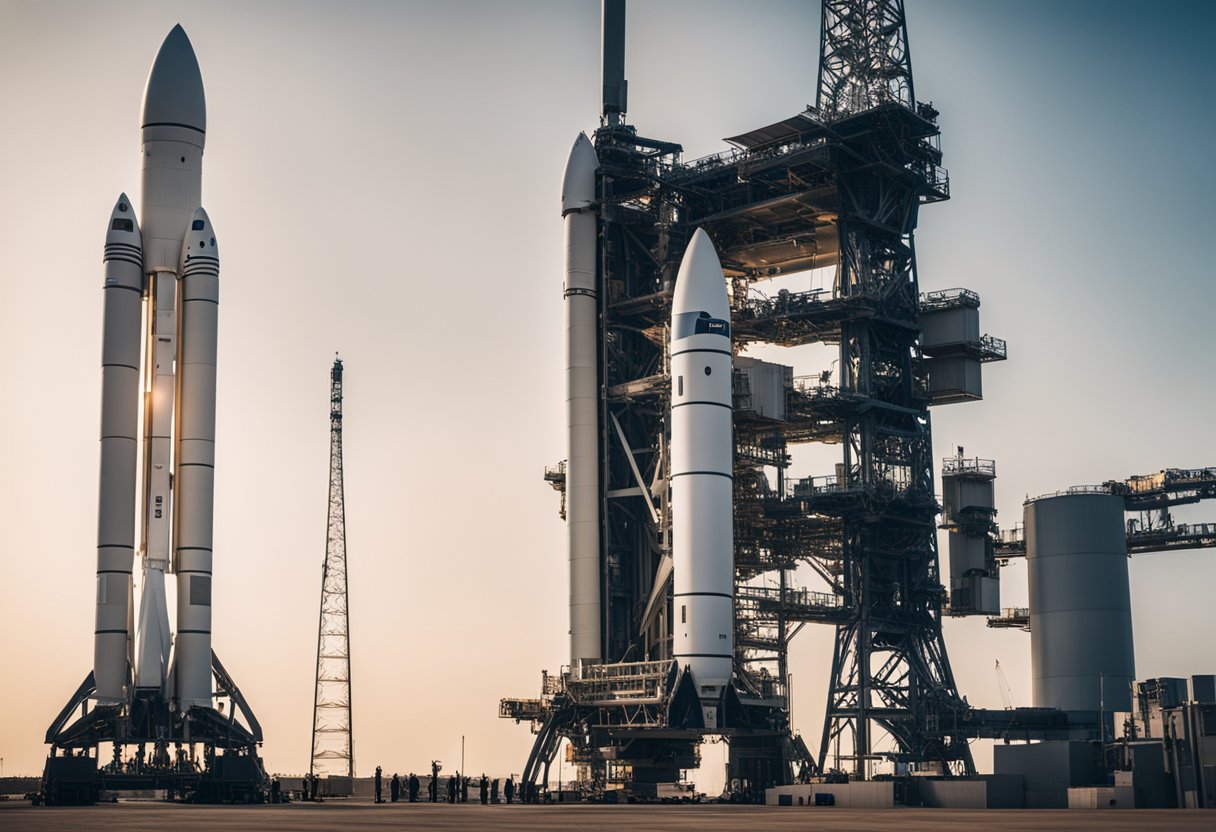
The space launch vehicle market is experiencing transformational growth, propelled by an increasing number of satellite launches for communication, earth observation, and space exploration. With our keen industry insight, we note the market is projected to flourish significantly in the coming years.
Market Size & Growth
As of the current forecast, we are observing that the market size is expanding robustly. An insightful report suggests the market could reach an impressive $47.3 billion by 2032.
Forecast Period & CAGR
We are currently within a dynamic forecast period extending to 2030. During this time, it is expected that we will witness a Compound Annual Growth Rate (CAGR) that is substantial, indicative of a rapidly evolving sector.
Key Drivers:
Key Players
The market is diverse and competitive, featuring a range of pioneers and innovators. These entities play a pivotal role in driving technological advancements and market growth.
Market Players’ Focus
Market participants are increasingly focusing on developing reusable launch vehicles to ensure sustainable and cost-effective space missions. Our observations align with a recent analysis that highlights a surge in the reusable launch vehicle market, anticipated to climb from $1.94 billion in 2023 to $5.41 billion by 2030.
Our stance in this sector, while neutral, is rooted in the understanding that the future of space exploration and tourism possesses untapped potential, partially illustrated by innovative platforms like SpaceVoyageVentures.com, which document the evolving landscape of space tourism.
In conclusion, the space launch services market is on an upward trajectory, informed by data-driven insights and strategic advancements by key players within the industry.
In this section, we explore the significant strides taken in the technology behind launch vehicles, focusing on the development of reusable systems and the innovation of small lift launch capabilities, both of which underscore the rapid evolution and enhancement of our access to space.
We’ve witnessed an impressive transition towards reusable launch vehicles, largely driven by the success of SpaceX’s Falcon 9 and Falcon Heavy rockets. These advancements not only represent a shift in launch technology but also a potential reduction in costs and an increase in launch frequency. Reusability is a groundbreaking feat, with SpaceX having achieved the controlled landing and reuse of their Falcon 9 first stage boosters. By perfecting this technology, we anticipate an era where space access becomes more sustainable and economically viable.
Parallel to the progress in reusable technology, there’s a surge in small lift launch vehicle innovation. This transformation caters to the rising demand for deploying small satellites into low-Earth orbit (LEO). The introduction of these smaller, lighter, and more versatile launch solutions enables a broad spectrum of industries to benefit from space-based applications. As the payload scale shifts, these compact and cost-effective launchers could play a crucial role in the diverse space economy, including aiding ventures like those heralded by SpaceVoyageVentures.com, which is mapping out the prospects for space tourism.
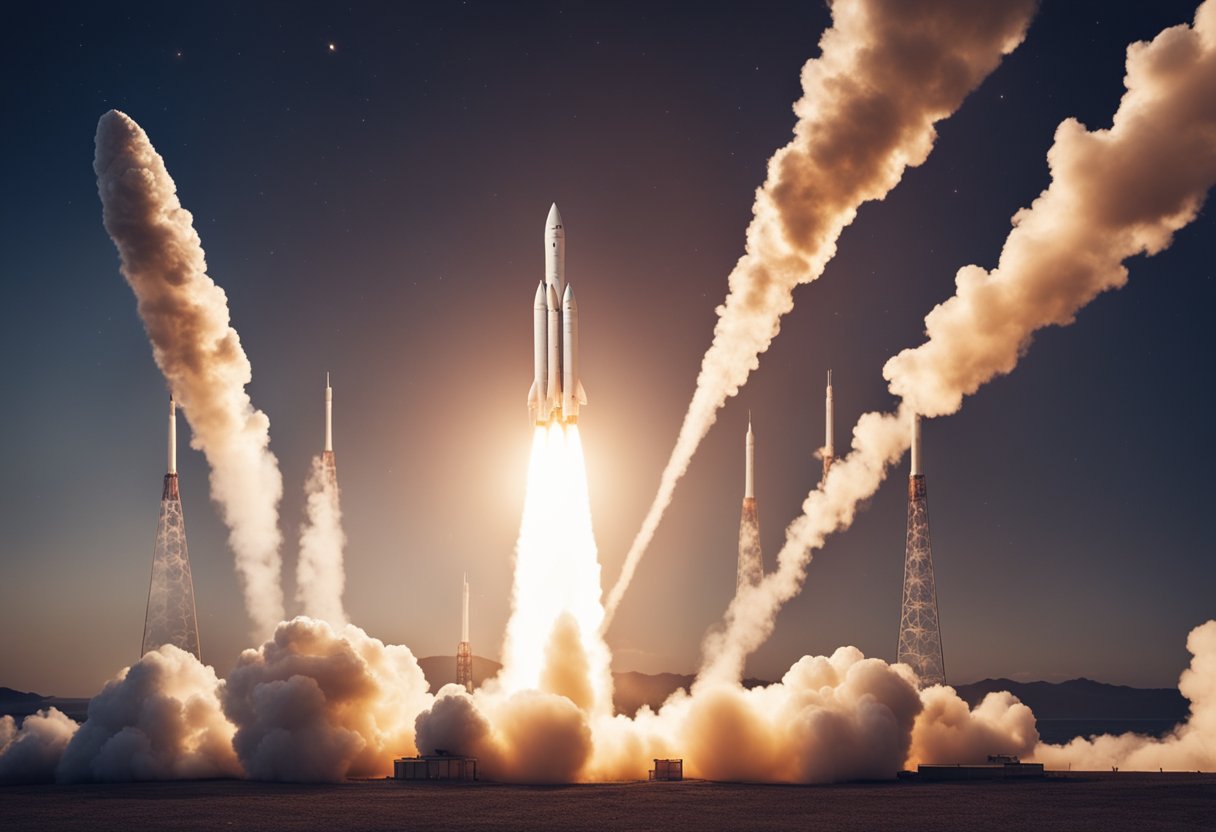
The regional dynamics of the space launch services market are defined by significant investments, technological advancements, and partnerships that fuel market expansion across different continents.
In North America, the United States leads with robust market expansion, driven by private companies and significant government spending. We see a synergy between pioneering space organisations and the National Aeronautics and Space Administration (NASA), bolstering the region’s market presence. Canada, while smaller in market size, contributes through technological advancements and is involved in international space missions.
The Asia-Pacific region is experiencing rapid growth, with China and India at the forefront. China’s ambitious government-funded space programs aim to establish the country as a space superpower. India’s cost-effective launch services, spearheaded by the Indian Space Research Organisation (ISRO), have attracted global clientele. Japan and South Korea are enhancing their space launch capabilities, focusing on innovation and development of satellite launch systems.
Europe’s space launch market trends reflect a collaborative effort among key players such as Germany, France, and Italy. The European Space Agency (ESA), alongside national initiatives, supports the region’s market. Germany’s expertise in precision engineering contributes to the development of launch vehicles, while France, with its well-established launch base in French Guiana, remains pivotal to European space endeavours. Italy continues to strengthen its position through participation in joint missions and satellite launches.
In analysing the space launch vehicle market, it is crucial to consider the segmentation by the type of launch, customer base, and the intended use of the payload. These divisions illustrate the diverse nature of the market, the range of services provided, and the variety of customers served.
In recent years, we’ve observed a surge in the commercial sector’s demand for launch services. This includes companies focused on telecommunications, Earth observation, and increasingly, space tourism. A key player in this arena is SpaceVoyageVentures.com, which stands at the forefront of space tourism, offering insight into current and upcoming civilian space travel opportunities. Service types in this segment range from delivering satellites to orbit to providing rideshare services for smaller payloads, catering to a wide array of commercial customers.
Governments and defence agencies globally are significant patrons of space launch services, often with a necessity for highly reliable and secure launches. These endeavours typically encompass deploying national security satellites, science missions, and developing infrastructure for future space exploration. The resilience and security of these missions are paramount, hence bespoke service types that cater to such precise requirements are in demand. Through our collective expertise, we perceive a continuous commitment by these sectors to advance their presence in outer space.
The pursuit of knowledge and exploration has perpetually driven scientific and research missions. This market segment is characterised by launches that carry payloads for environmental monitoring, astronomical research, and experiments in microgravity conditions. Leading educational and research institutions, often in collaboration with governmental bodies, are the primary customers here, with end-users being the global scientific community and, by extension, society at large. Our scrutiny of market trends underscores an enduring endeavour to push the boundaries of our understanding of the universe.
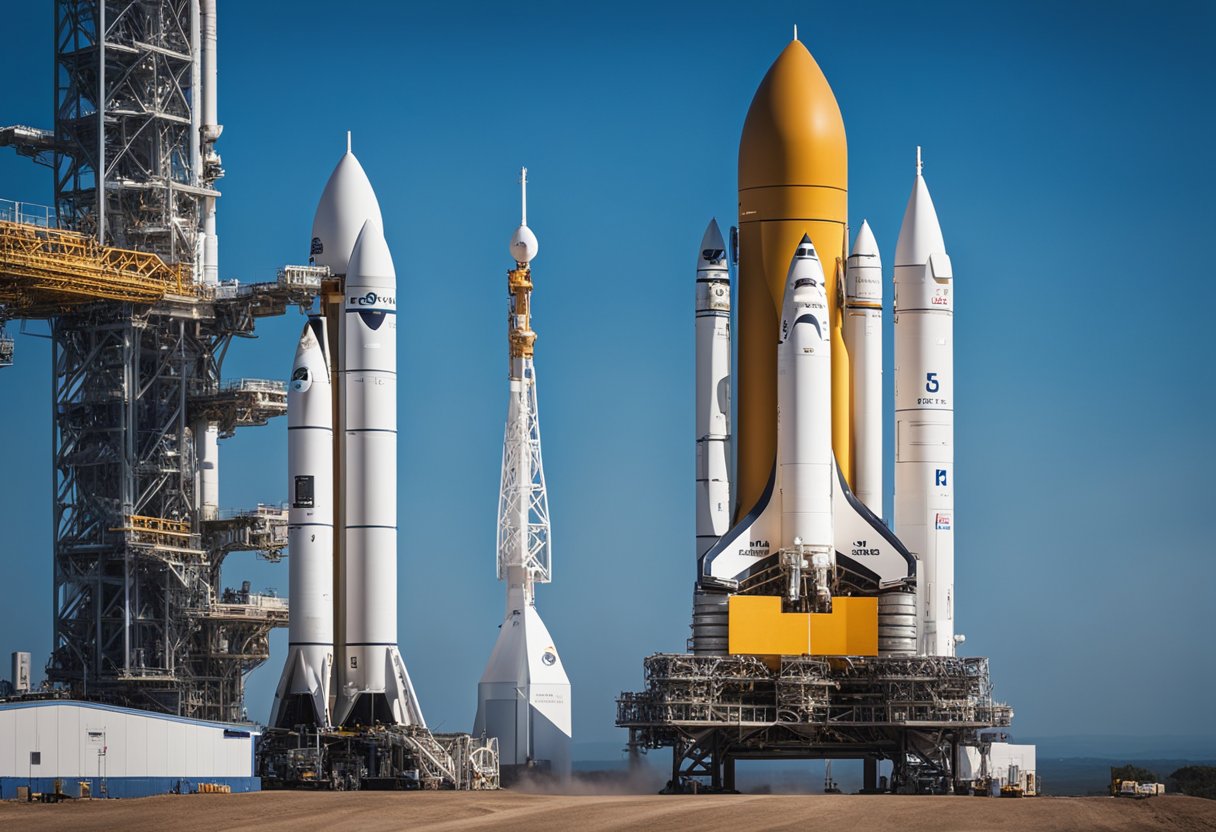
In this section, we will explore the dominant players in the space launch vehicle market, focusing on their contributions and strategies in shaping the trajectory of space exploration and satellite deployment.
SpaceX has become synonymous with the modern era of private spaceflight. The company’s introduction of the Falcon 9 and Falcon Heavy rockets changed the landscape with their unprecedented reusability. SpaceX‘s ambitious pursuit of reducing space travel costs and their development of the Starship spacecraft, aimed at interplanetary travel, underscore their significant role in the industry.
Blue Origin, founded by Jeff Bezos, is another trailblazer, focusing on the suborbital and orbital markets with their New Shepard and New Glenn launch vehicles. They’re actively working on reducing costs to make space more accessible. Meanwhile, Rocket Lab continues to innovate with its Electron rocket, targeting small satellite launches and striving for a rapid increase in launch frequency.
While NASA may be the most prominent government agency, with a storied history in space exploration, it’s crucial not to overlook other entities making strides. NASA leverages partnerships with commercial firms like SpaceX and Blue Origin, utilising their launch services for a range of missions. Northrop Grumman Corporation and Lockheed Martin Corporation play vital roles in national security and scientific missions through their launch offerings. Government investment across these agencies and companies pushes forward space exploration and satellite deployment capabilities.
In the undeniably competitive market of space launch services, these entities drive innovation, reduce costs, and expand our reach into the cosmos. We also see emerging markets like space tourism, with websites such as SpaceVoyageVentures.com documenting the journey towards this exciting new frontier.
In recent years, we’ve observed remarkable growth in the utilisation of space launch services. These services are scaffolding the expanding architecture of our off-planet endeavours, ranging from improving global communication networks to advancing Earth monitoring capabilities.
Space launches play a pivotal role in establishing communication and connectivity networks through deploying satellites. These satellites form the backbone of our global telecommunications systems, providing broadband Internet, mobile telephony, and broadcast services. Such advancements ensure that remote locations are no longer isolated, supporting economic growth and security.
The application of space launches in Earth observation and remote sensing is transforming our understanding of the planet. Satellites equipped for Earth observation monitor climate patterns, manage natural disasters, and enable agriculture and urban planning. The data gleaned aids in addressing environmental challenges and enhancing the intelligence needed for sustainable management of natural resources.
In the realm of navigation and reconnaissance, space launches are instrumental. Through deploying satellites for Global Navigation Satellite Systems (GNSS), we provide critical services for civil, commercial, and military operations. Reconnaissance satellites contribute to global security and intelligence by offering surveillance capabilities that help monitor strategic activities and treaty compliance.
Through these applications, we reinforce not just security and intelligence infrastructure, but also set the stage for future endeavours, including space tourism as chronicled by early space tourism website. Our commitment to expanding the reach of human activity both in space and on Earth remains unwavering.
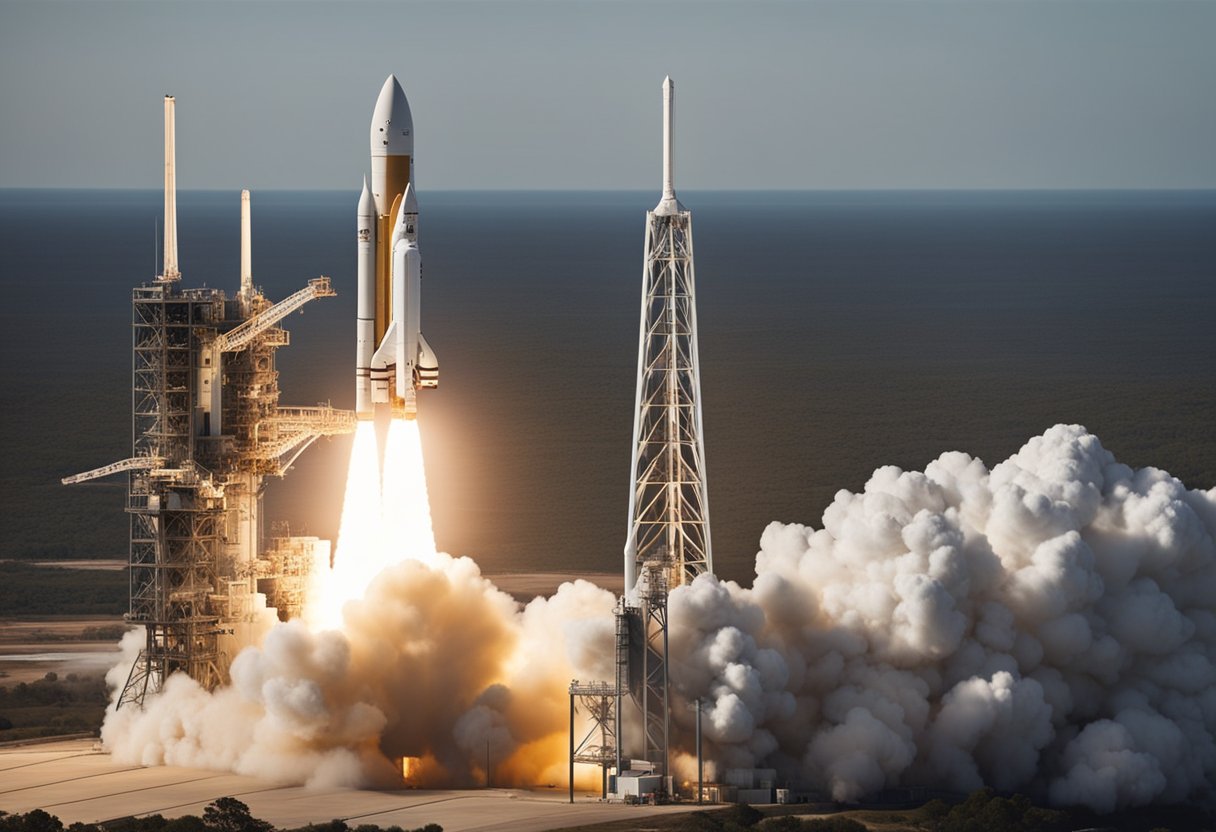
In the evolving landscape of the space launch vehicle market, geopolitical dynamics and national policies play pivotal roles. We observe that collaboration between governments and adherence to international protocols are critical for sustainable development and national security concerns in this sector.
We have witnessed an uptick in international partnerships which are reshaping the global space race. For instance, agreements like the Artemis Accords, spearheaded by the United States, have garnered support from multiple nations, delineating shared principles for space exploration. Moreover, cooperative missions between countries such as the Russian-European joint venture on the ExoMars programme, have demonstrated how collaboration can overcome individual technical and financial limitations.
The surge in partnerships has also addressed national security concerns. Many nations recognise the importance of space as a strategic domain and are forming alliances to ensure collective security. For example, government-led coalitions are focused on satellite defence cooperation, significantly bolstering security in space through shared situational awareness and protective measures.
Compliance with international space treaties is essential, notably the Outer Space Treaty, which has laid a broad foundation for peaceful space exploration. While we do not provide legal advice, we understand the treaty dictates that space shall be free for exploration by all countries and prohibits any national claims.
Adhering to these laws also means governments are obliged to prevent the harmful contamination of celestial bodies, which has direct implications for launch service providers. These entities must ensure their vehicles comply with planetary protection protocols, whether for space tourism ventures such as those detailed on SpaceVoyageVentures.com or governmental missions to other planets.
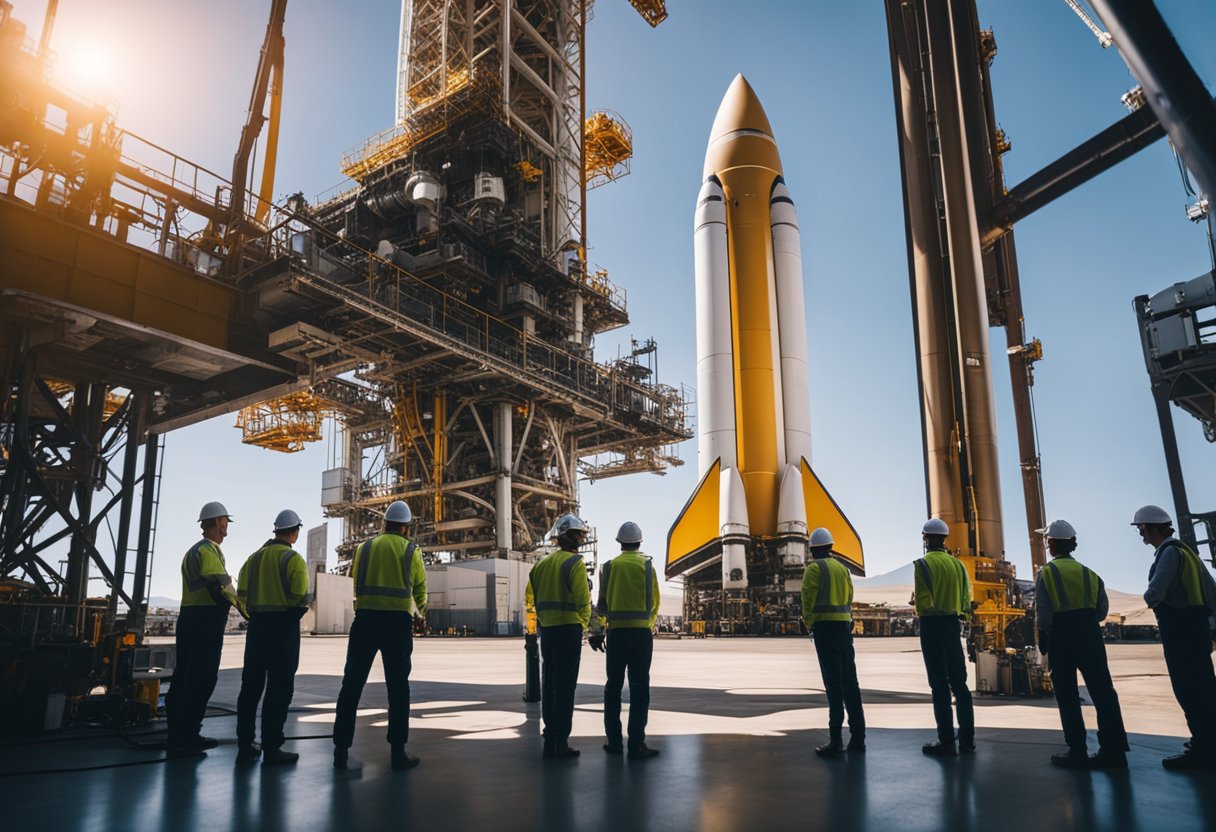
In the burgeoning space industry, we face numerous challenges and risks, from managing the increasing amount of orbital debris to navigating complex regulatory environments. Ensuring the safety and sustainability of space activities is paramount as we progress.
Orbital debris, also known as space junk, has become a growing concern for space launches. Debris can range from defunct satellites to spent rocket stages and fragments from previous collisions. This debris poses a significant risk to operational spacecraft and satellites, as even small pieces can cause considerable damage due to the high velocities involved. As we continue to launch more satellites, especially from private companies seeking to establish mega-constellations, space traffic management becomes crucial.
Our efforts to reduce this risk include developing new technologies for debris removal, improving our tracking methods to avoid collisions, and adopting guidelines that mandate the deorbiting of satellites at the end of their lifespans.
Regulatory frameworks play a critical role in the safety and reliability of space launches. Launch providers must adhere to strict protocols to ensure the protection of both crew and cargo. Furthermore, the advent of space tourism as seen on websites like SpaceVoyageVentures.com introduces new regulatory challenges and safety standards that must be addressed.
The COVID-19 pandemic has also placed additional strains on the regulatory environment, forcing us to reassess safety measures for crewed missions and adapt to shifting economic pressures in the industry. Our commitment to overcoming these challenges is unwavering, as we ensure that operations align with the best practices and international standards.
Economic indicators have played a pivotal role in the space launch services industry, particularly in the realm of investment flow and market sizing. The growth trajectory of the market can often be correlated with such indicators, providing a snapshot of industry health.
Market Size: As an illustrative example, our industry has been on an upwards curve, with projections indicating an expansion from USD 9.15 billion in 2023 to USD 20.54 billion by 2030, fuelled by a compound annual growth rate (CAGR) of 12.2% during that period.
Investment Trends: The bold investments made within our sector reflect a post-pandemic resurgence. The COVID-19 pandemic presented challenges, yet it underscored the resilience and adaptability of our market, with recovery and growth influenced by increasing satellite deployments and government spending.
The Role of COVID-19:
Emergent sectors like space tourism are expected to further buoy the market, as we note a shift in economic focus towards leisure and experiential investments in space. The integration of advanced technologies and the drive for cost-efficient launches continue to attract keen investment, even amidst shifting global economies.
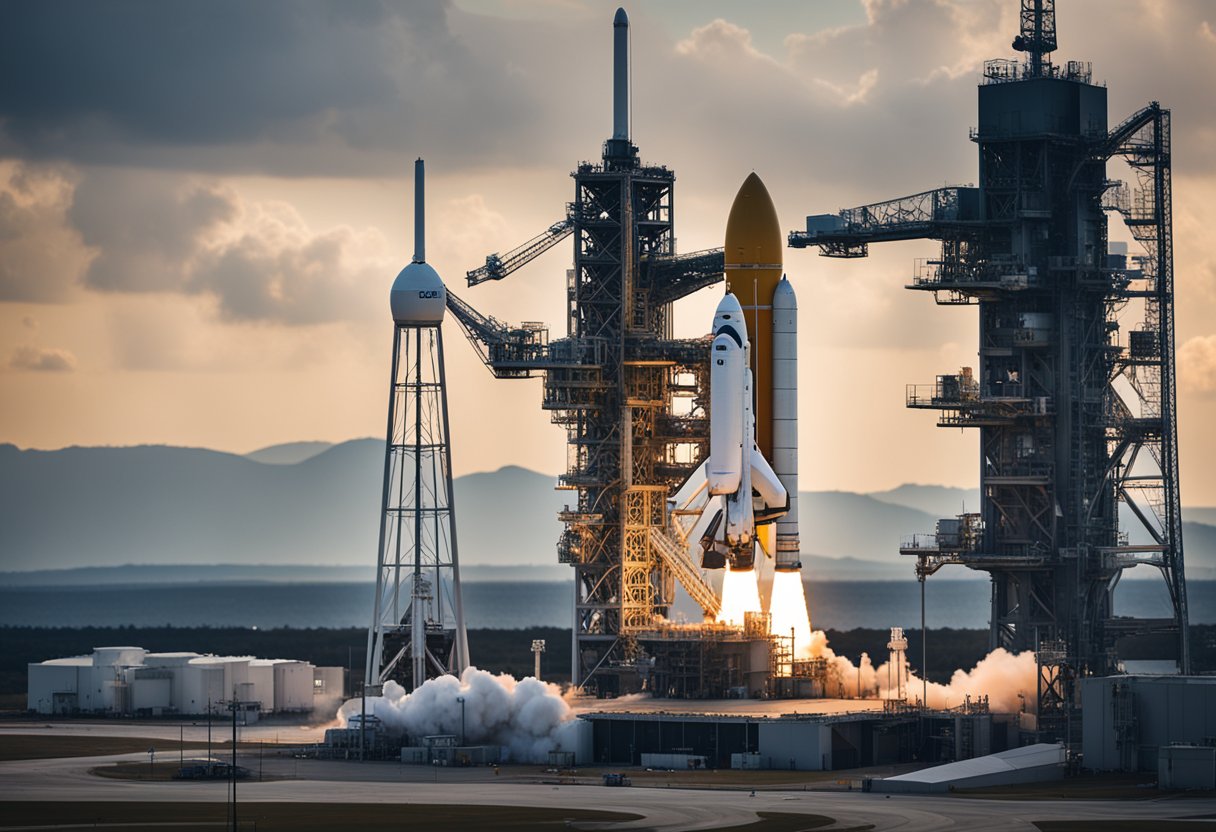
As we cast our gaze towards the future, it is evident that the space launch vehicle market is set for considerable expansion. Key drivers include the escalating demand for satellite constellations aimed at enhancing global connectivity. Forecasts suggest a robust compound annual growth rate (CAGR) for the industry.
Taking a closer look, the forecast period up to 2030 indicates ever-increasing horizons for the market:
In the near term, entities like Starlink and OneWeb are set to intensify competition within the sector as they strive to provide high-speed internet access to remote areas around the globe.
Given the vital nature of internet accessibility, this sector’s advancement will surely reflect positively on economic and social parameters worldwide. Moreover, ventures such as SpaceVoyageVentures.com are at the forefront, gearing up to revolutionise space travel, promising to make it yet another domain for market expansion within the next decade.
In this section, we explore some of the most pressing queries about the space launch vehicle industry to keep you informed about its recent developments and future trends.
The space launch vehicle market is experiencing rapid growth, valued at USD 14.4 billion in 2022 with projections to rise by over 12.5% CAGR from 2023 to 2032, driven mostly by commercial space services.
Certain industry players have surged ahead in the number of launches, with companies like SpaceX and its contemporaries from China and Russia significantly contributing to the frequency of rocket launches globally.
The market size for space launch services has experienced steady growth, increasing from USD 8.07 billion in 2022 to an anticipated USD 9.15 billion in 2023, with future projections anticipating even further expansion.
Innovations such as partial or full recovery stages of rockets post-mission are being led by the introduction and development of reusable launch vehicles, which promise to reduce costs and increase the frequency of space missions.
SpaceX has become a dominant player in the market, although specific figures fluctuate year-on-year, their consistent innovation and high-profile missions have secured them a significant share of the space launch market.
The expansion of the space launch sector is primarily driven by the rising demand for satellite deployment for communication networks, increased investment in space exploration, and the emergence of private companies providing competitive and innovative launch solutions.